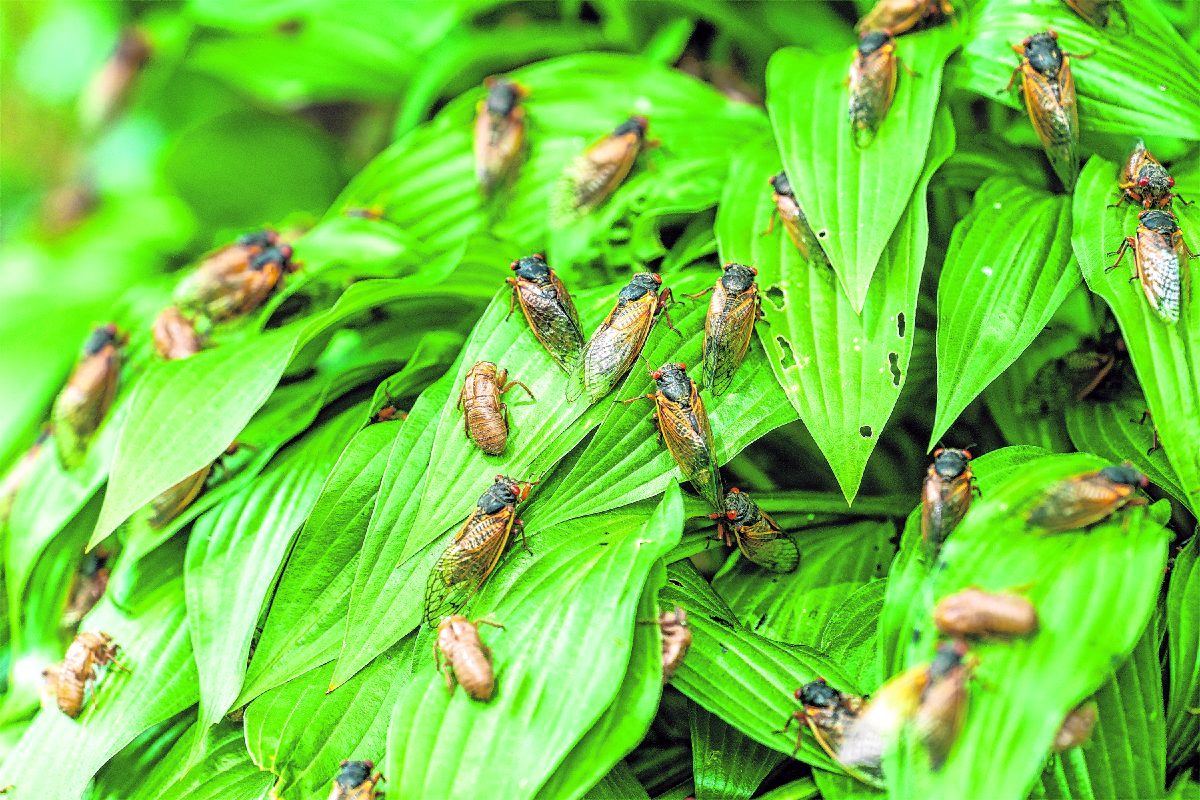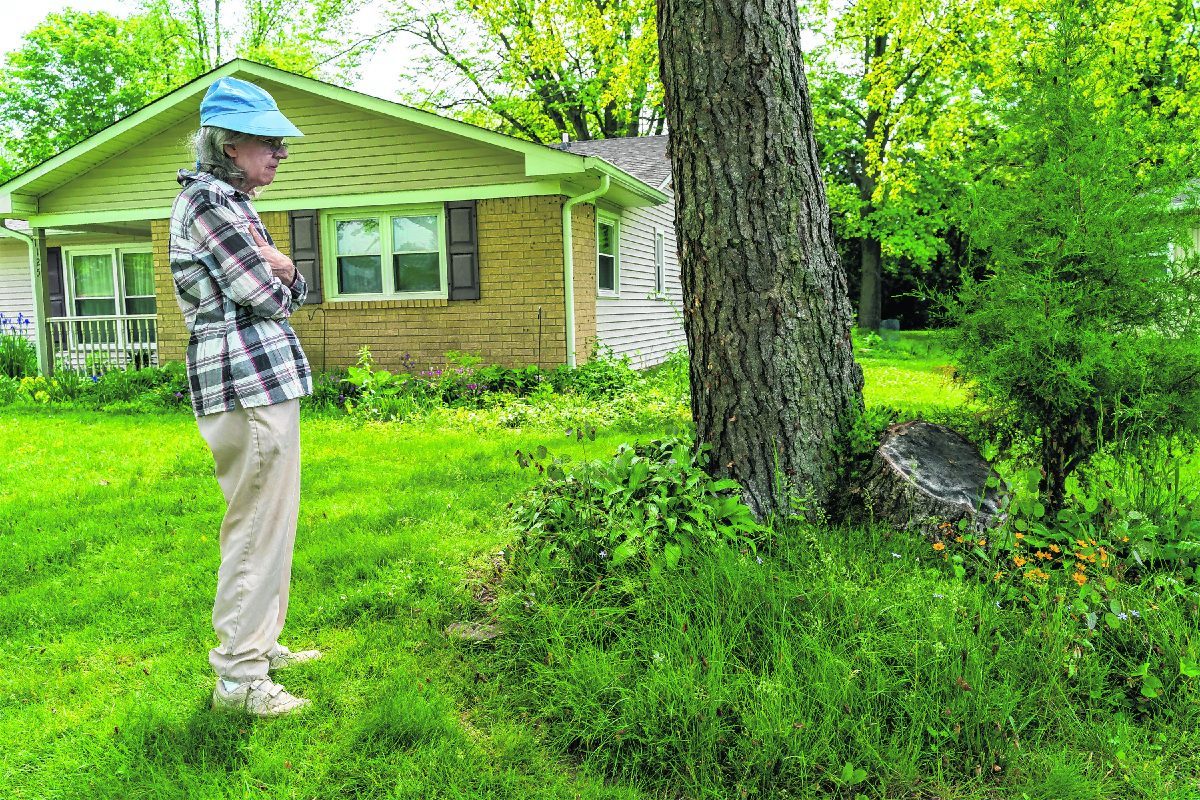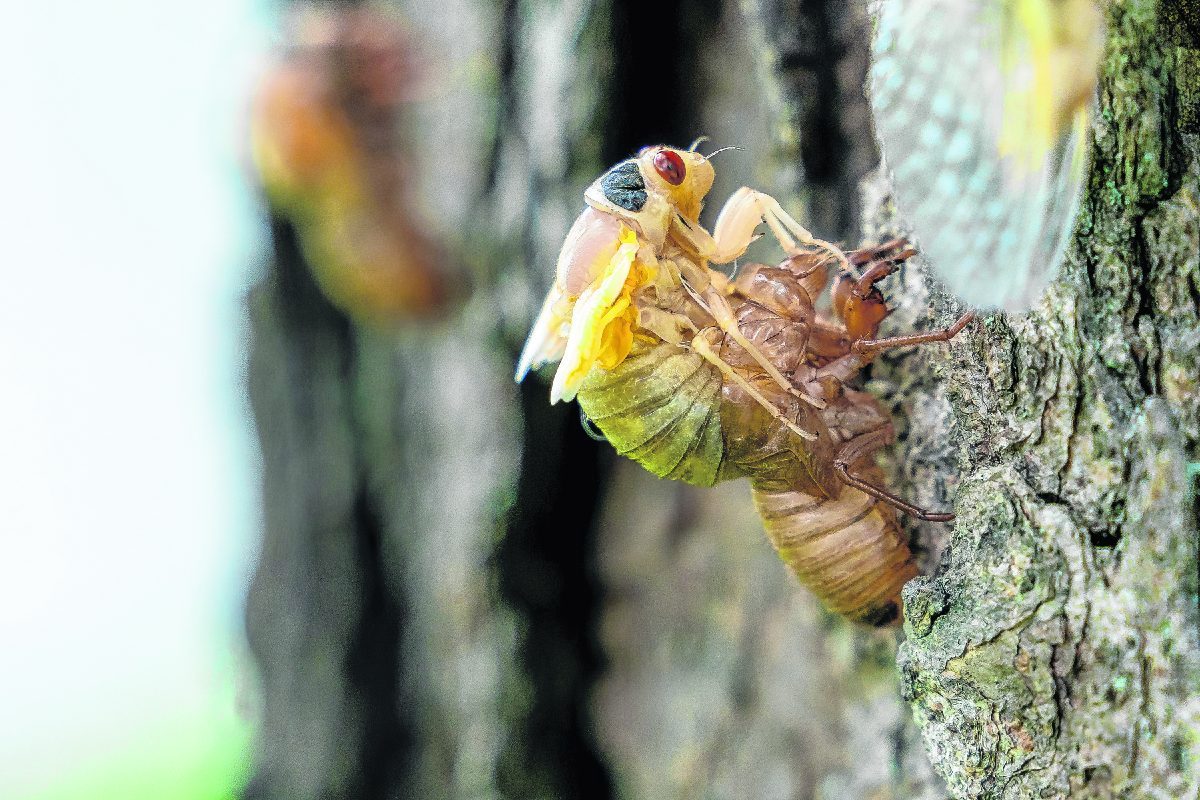
For 17 years, they’ve tunneled and fed off tree roots underground, and now they’ve emerged, singing and scaling trees in southern Indiana, including right here in Johnson County.
As many as 1.5 million cicadas are emerging this month in Indiana, with the biggest populations in southern Indiana, according to Indiana Environmental Reporter. The cicadas have been spotted in Franklin and southern Johnson County, and experts say they will make appearances all across the state.
Keith Clay, a professor emeritus at Indiana University, is now ecology and evolutionary biology chair at Tulane University. He is back in Bloomington just to witness the cicadas arrive, and is serving as the go-to expert for a documentary being made about the bug species.
“People think it’s fascinating, and other people think it’s disgusting,” Clay said.
He studied their last emergence in 2004, focusing on the effect the cicadas had on forests. He gets why people might be disgusted by the bugs.
“There are aspects — all the squashed nymphs and adults on our sidewalk and all over the place, the shells piling up — that is not as aesthetic,” Clay said.
But they are mostly harmless. They don’t bite, but fly clumsily and often fall onto passersby, he said.
Owners of young trees should beware of the brood, though. Female cicadas lay eggs in small tree branches, snapping twigs the size of a pencil.
Clay experienced this himself, and lost a new yellowwood tree to the critters. Eggs were laid in many of the branches, eventually killing the tree.
To protect the young trees, growers should consider buying a net. This isn’t necessary for evergreen trees, as the cicadas are particular about where they lay eggs. They prefer dogwood, maple, apple and crabapple trees, he said.
What appeals to him is their compact life cycle: they live underground for almost 17 years, then dig their way back up.
“And then they all die,” Clay said.
The cicadas are picked off by hungry predators or suffer in too-cold conditions. Many die within a week of reaching the surface. Some live a few more weeks to mate and lay eggs.
Contrary to popular belief that the cicadas will be mostly in heavily wooded areas, Clay said he has noticed large swarms in human-dominated areas.
“You go out in Brown County State Park, you might hear a little bit, might see a few, but it’s nothing like in my yard right here in suburban Bloomington,” Clay said.
More than anything, Clay is intrigued by the mystery of the creatures. Three different species are synchronized to come out every 17 years, which is interesting from an evolution perspective, he said.
“First of all, why are they coming out only every 17 years? And how come they’re all synchronized, wouldn’t it be better maybe if they were coming out different years?” he said.
Each of the three species have distinctive songs as they sing in search of a mate, Clay said.
There is little known about what the cicadas do during their 17 years underground, which poses a challenge for the documentary crew. He suggested they use a medical endoscope to find out, he said.
“Hospitals are not keen on letting you borrow them and sticking it in the ground and getting contaminated with bacteria and fungi,” Clay said.

According to CicadaMania.com, the bugs are active underground, tunneling and feeding as opposed to hibernating.
While they are harmless, at least one Franklin resident has found them to be a nuisance. Erin Wilhite, who lives off Duane Street, has begun referring to this time as “the cicada apocalypse.”
Her entire front door and fence are covered with the bugs and their shells, and have been for nearly a week. The situation became slightly less severe after she sprayed the area with pesticides, she said.
“You can actually see the fence now,” Wilhite said.
It’s a mystery why the cicadas chose her home, because Wilhite does not have trees the insects can lay eggs in, and her neighbors aren’t experiencing the same problem, she said.
Johnson County residents can expect to see the critters climbing up trees and telephone poles for the next four to six weeks. After that, the cicadas will have laid their eggs and died off, not to return again until 2038.
Wilhite said she may leave the area before the next wave.
Sarah Hanson, county extension director at Purdue Extension Johnson County, advises avoiding the use of pesticides to protect young trees from the cicada swarm. The volume needed would also drive away insects that are beneficial to the trees, she said.
Questions regarding cicadas can be directed to the Purdue Extension Johnson County office at 317-736-3724.





